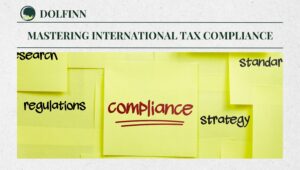
The 10 Key GAAP Principles: A Comprehensive Guide
The Generally Accepted Accounting Principles (GAAP) are a set of standardized accounting guidelines designed to ensure consistency, business transparency, and accountability in financial reporting standards. These principles serve as the foundation for financial accounting in the United States and are crucial for businesses, investors, and stakeholders. This article delves into the ten core GAAP principles, explaining their significance and providing examples to illustrate their application. By the end, you’ll have a deeper understanding of how these principles influence financial reporting.
The 10 Key GAAP Principles
1. Single Entity Principle
The Single Entity Principle establishes that a business must maintain financial records separate from its owners or any other businesses. This distinction ensures clarity and prevents confusion during audits, tax filings, or financial reporting. Keeping separate financial statements for different entities avoids the intermingling of data, which could mislead stakeholders and complicate regulatory compliance.
Example: If a parent company owns a subsidiary, each entity must maintain its financial records independently. For instance, if the subsidiary incurs a loss, this should not directly impact the parent company’s books unless consolidated financial statements are prepared.
2. Monetary Unit Principle
This principle requires that all financial transactions be recorded using a consistent currency. Adhering to a single monetary unit ensures comparability and eliminates ambiguity across financial statements. It assumes that the value of currency remains stable over time, despite inflation or other economic factors.
Example: Consider a multinational corporation based in the United States. Although it operates in countries like Germany and Japan, all financial transactions are recorded in USD. If a German subsidiary conducts a transaction in euros, the amount is converted to USD at the prevailing exchange rate for consistency.
3. Specific Time Period Principle
Financial reporting should cover a clearly defined time period, such as a fiscal year, quarter, or month. This principle provides stakeholders with a snapshot of the company’s performance and financial position during a specific timeframe, enabling accurate comparisons across periods.
Example: An income statement might detail the revenues and expenses from January 1 to December 31. Similarly, a quarterly report might cover data from April 1 to June 30, ensuring stakeholders can gauge the company’s progress in discrete intervals.
4. Recognition Principle
The Recognition Principle dictates that revenues and expenses must be recorded when they are earned or incurred, regardless of when cash changes hands. This aligns with the accrual basis of accounting and provides a more accurate picture of a company’s financial performance.
Example: A construction firm completes a project in December but receives payment in February. The revenue is recognized in December, as that is when the service was delivered and earned.
5. Going Concern Principle
Under this principle, businesses are presumed to operate indefinitely unless there is evidence to the contrary. This assumption impacts the valuation of assets and liabilities, as companies functioning as going concerns typically value their assets based on operational utility rather than liquidation value.
Example: A retail company operating normally would record its inventory and property at ongoing market value. However, if the company faces imminent liquidation, it would value assets based on their potential sale price during liquidation.
6. Full Disclosure Principle
Transparency is at the heart of the Full Disclosure Principle. Companies must provide all relevant financial information to stakeholders, ensuring informed decision-making. This principle covers both qualitative and quantitative disclosures, preventing companies from concealing material facts that could impact stakeholders.
Example: If a company faces a significant lawsuit, it must disclose this information in its financial statements. Such disclosures help investors assess potential risks and make well-informed decisions.
7. Matching Principle
The Matching Principle requires that expenses be reported in the same period as the revenues they help generate. This ensures that financial statements reflect a company’s true profitability by aligning costs with their associated revenues.
Example: Suppose a marketing campaign in December results in product sales within the same month. Both the marketing expenses and the resulting revenues should be recorded in December for accurate representation of profitability.
8. Principle of Materiality
This principle emphasizes focusing on significant transactions or discrepancies while ignoring trivial ones that do not affect the overall financial picture. Accountants must use their judgment to determine what qualifies as “material.”
Example: A $50 discrepancy in a company’s petty cash account may be considered immaterial and ignored. However, a $500,000 error in a financial statement would require immediate investigation and correction.
9. Principle of Conservative Accounting
Conservative Accounting ensures prudence in financial reporting by requiring accountants to recognize expenses and liabilities as soon as they are foreseeable, while only recognizing revenues when they are realized. This prevents overstatement of financial performance.
Example: If a company anticipates a legal penalty, it should record the liability immediately. Conversely, a potential contract with a client should not be recorded as revenue until the agreement is finalized and payment is certain.
10. Historical Cost Principle
This principle states that assets must be recorded at their original purchase price, irrespective of any changes in market value. This approach provides consistency and reliability in financial reporting, even if it does not reflect current market conditions.
Example: A company purchases machinery for $200,000. Even if the market value of the machinery increases to $250,000, it is recorded at the historical cost of $200,000 on the balance sheet.
For more Information Please refer:
- What Is GAAP? (Definition, 10 Principles, Compliance) (builtin)
- Generally Accepted Accounting Principles (United States) (wikipedia)
- The Complete Guide to Generally Accepted Accounting Principles (Strike Blogs)
- GAAP: Generally Accepted Accounting Principles (CFI)
Conclusion
The GAAP principles provide a robust framework for financial reporting, ensuring financial accuracy, transparency, and consistency. While adhering to these principles does not guarantee error-free financial statements, it significantly reduces the likelihood of misrepresentation. Understanding and applying these principles is essential for businesses, accountants, and stakeholders to make informed decisions.
FAQs
1. What is GAAP?
GAAP, or Generally Accepted Accounting Principles, is a set of standardized rules that govern financial accounting and reporting in the United States.
2. Why are GAAP principles important?
GAAP principles ensure consistency, transparency, and accountability in financial reporting, making it easier for stakeholders to assess a company’s performance.
3. Are GAAP principles mandatory?
In the U.S., publicly traded companies must follow GAAP. Private companies may choose to adopt GAAP for consistency and comparability.
4. What happens if a company doesn’t follow GAAP?
Non-compliance with GAAP can lead to inaccurate financial statements, loss of investor trust, and legal consequences.
5. How do GAAP principles differ from IFRS?
While GAAP is used primarily in the U.S., the International Financial Reporting Standards (IFRS) are used globally. GAAP is more rules-based, whereas IFRS is principles-based.
You can also read 5 Steps to Conquering PP and E Accounting for US GAAP Success for more.
Summary
ASC 820 standardizes fair value measurements using hierarchy levels, enhancing transparency and compliance.
Latest Posts
- Top Cash Flow Forecasting Tools You Can’t Ignore for Global Businesses

- Mastering Profit vs. Cash Flow: 5 Key Strategies for Financial Success

- 5 Key Advantages and Disadvantages of Outsourced Accounting: Is Outsourced Accounting Worth the Risk?

- Mastering Cash Flow Management in 2025: 7 Proven Strategies for Financial Success

- Mastering International Tax Compliance: 7 Crucial Strategies for Multinational Success

- 5 Common Bookkeeping Mistakes Small Businesses Make and How to Avoid Them

